|
Each day of this PDC has been journalled here on the blog by Daniel McGough. Deep into design projects we delve deeper into cleaning waste and cycling nutrients as we draw closer to the end of this awesome training... Day 11 A flick of the curtain shows a clear sky, the sun has returned. Another stunning Scandinavian morning! As we enter this second week of the our PDC here at Ridgedale Permaculture, the students’ design imaginations have been activated to start applying the skills they have learned over the last 11 days. One of the questions that has arrived on the ‘Parking’ board is “How does a compost toilet work?” Perfect timing. Day 11 starts with running through ways of dealing with human wastes. First up are Compost Toilets (or as we call them in Australia, a thunderbox), and an ideal carbon source to sprinkle on your waste is sawdust or rice husks, as we used last year on a project I worked on in Thailand. Separating and collecting urine is also super important, as you want to keep the solid waste dry and it can be used as a fertiliser. Here at Ridgedale we separate the urine and pour it into the rice terraces to add nitrogen, and spray it around the edges of the fields to deter elk and deer. “Urine is sterile when it comes into the body and if it goes into soil it just gets ‘pfffth’…. synthesised. Good to dilute it, say, 1:10, 1:20...” The aim of this is to manage human waste without flushing expensive treated drinking water down the toilet if not necessary.
The next are water and plant based methods using banana and papaya circles where the waste matter and continuously added vegetative matter just gets munched. These are also very appropriate ways of utilising grey-water outside a kitchen or laundry window. Some beautiful designs come forth from the WET (wetland ecosysytem treatment) systems pioneered by Jay Abrahams’ work in the U.K. (www.biologicdesign.co.uk ) that use plant life and soil organisms to treat grey and black systems. Richard describes a visit to the Permaculture Magazine's offices where they had recently replace a decommissioned sewage system with a fairly extensive WET system; “The water coming out of this system was cleaner than the water coming out of the taps in Portsmouth City.” These applications have been used on both a home scale and industrial. “In 1993 we created a WET System for Weston's Cider - a large family owned cider mill in Herefordshire and in 2001 we created a WET System for The Otter Brewery - an expanding family owned ‘micro-brewery’ in Devon. Then in 2007 another cider mill WET System was created; this one was for Sheppy's Cider Farm in Somerset.” http://www.biologicdesign.co.uk/page.php?pageid=wetsystemsestablished In 2013 I met a pretty amazing fella called Chakra Widia in Bali, Indonesia in 2012, who had set up one of the best home scale treatment systems I have ever seen (https://www.youtube.com/watch?v=EsV7NXe8r5o). The only thing is that it uses a reed bed as the second stage so will require increased maintenance but hey, this guy is cleaning every drop of water that leaves his super cool house, growing fish and aquatics and sending cleaned water back into his system. We discuss embodied energy issues and turn to other solutions. Bio-gas digesters are also introduced as we learn how such systems are used in India to provide fuel for 5 million people. Important – “you need some kind of flashback collar or airlock…. otherwise you might die.” Good advice! Tom Kendall has built one at the Maungaraeeda at the PRI Sunshine Coast and you can check out the build here - http://permaculturesunshinecoast.org/2013/02/24/biogas-project-at-pri-sunshine-coast/ Morning tea over we head to Andalucía, Spain to take a look at Armando’s project. It’s a drylands landscape with arroyo’s scouring down the highlands and into a large flat, dry river bed that would have once been a flowing waterway. Richard starts sketching placement estimates of roads, "there’s potential to store water all over the place that you would then want to start connecting up with your roads, all these little valley shapes could be filled by boundary roads. Better maps, terrain mapping and catchment calculations would be essential here. A lot of potential, but you'd have to plan and sequence it very well. I mean, this place is super dry and super degraded” We’re watching a very simple and accuracy oriented process to start building the characteristics of the landform to allow its shapes to speak to any design, incorporating access for machinery, water storage, starting points and workable bits and pieces. “Divide it up with Water lines & roads and look; paddocks & subdivisions of this land start becoming more obvious when we work to the lands shape… roads need replacing here with the bulldozer they have on site, and there's some very good places for storing water. You can see from the photos some gross erosion caused from misplaced infrastructure. This place is gnarly, you would have to get this right.” Heading back to Australia I’m going to be able to look at all of our access roads and perhaps re-model them to act as water suspension and collection systems, rather than delivering water to the natural flow that leaves our site directly. The water will eventually end up assisting the regeneration of these systems, we’re just keen to avoid supporting any erosion we may inadvertently be creating with the current placement of our roads. A cool book to note is “Let Water do the Work” by Bill Zeedyk and Van Clothier, but it’s currently out of print and you’ll have to place an order (or pay $1000 2nd hand!) Briefly looking at energy efficiency we discuss the benefits of catching solar energy to run 12v appliances and discover replacements for fridges in the way of unglazed ceramic pots or a standing shelved structure placed in a cool room with a pipe coming in from under the house to keep fruit and vegetables at the optimum 6-8deg, as well as adaptations planned for the root cellar during the Internship. That’ll be happening back home where we have three fridges at the moment and most of our vegetables aren’t in the fridge for that long. 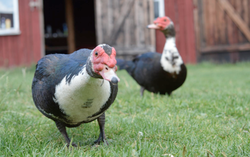 In the afternoon we get right into the design process developing the team’s Vision and Mission statements. For this design the client will be my home community of Bellbunya and I just so excited to have a team of fresh minded, considerate, brave and energised imaginations working in our favour to achieve our goals. The Vision is outlined as ‘the establishment of resilient perennial crop systems to support the development of a stable, off-grid community’. The mission statement reads: ‘The restoration of soils and reduced erosion and water loss by implementing Keyline Design and Holistic Management techniques to work towards abundance by increasing production and establishment of perennial crop, grains and animal systems’. Armando asks if the spiritual context of the community needs to be considered in the design. This gets me thinking. I reckon that the community’s spiritual endeavour will exist whether the project is applied or not, however it raises a very poignant design element. Can there be a partnering of practical and effective methods of food production and the representation of the character or essence of a place… hopefully so. 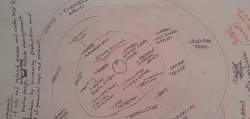 Building priority into our goals in the simple categories of‘Must, Should, Could’ list we see that we have lots of ‘musts’, all surrounding our limiting factor of food production (which + outgoing costs). All the other needs kind of stem from that while supporting them as well. For example the ‘must’ of establishing perennial fruits and nut systems relies on the ‘must’ of looking at Keyline Design and setting up a practical, efficient irrigation system, which in turn supports the must of catching and/or storing water high in the landscape. By delivering these objectives according to the shape of the land, the design should speak to us and guide the placement of elements on that land. The evening involves mostly continued work on design, some students head to the lake, while Lars, Richard and Thoma head out on the new row boat to score some more predator protein from the deep. The sauna calls once again before settling in to a wonderful TEDx presentation by Alf Orpen in Byron Bay about regenerative enterprise. (www.youtube.com/watch?v=KzkAkyMu5Kw) PERMACULTURE DESIGN COURSE 27TH SEPT - 11TH OCT 20142 Weeks left for Earlybird rates!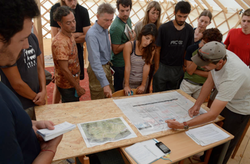 Say you wanted to study Permaculture or Regenerative design and you really wanted to understand how to design your own farm or project; they'd be all these books you should read, maybe some films on the internet, or maybe you download information from the internet, and all that may avail no action. All that could avail is a basic understanding of principles & elements of design, in a way similar to an artist's palette. You could have all the colors and brushes but unless you know how to paint you're going to end up with a big mess. That's where we got to in today's society, a big mess. If you are curious about the solutions that will allow us to restore the planets ecosystems whilst maintaining a stimulating and meaningful life living in resilient and mutually beneficial supportive ways then this is for you. Are you looking to develop a career in professional Permaculture design? Wanting to establish your own project or farm? Our Permaculture Design Courses are highly regarded internationally, with 90 hrs+ of curriculum based learning & internationally accredited via P.R.I. (Aus) & P.C. Assoc (UK) here is a chance to take a fully up to date PDC with one of Europe's most active Permaculture Professionals. For more details and bookings click here.
2 Comments
19/1/2024 01:34:43 am
Keep up the great work! Your posts are consistently captivating.
Reply
Leave a Reply. |
Details
Like us on FB Below for regular updatesStay up to date with customized updates you want to receive
Upcoming coursesArchives
December 2016
Categories
All
|
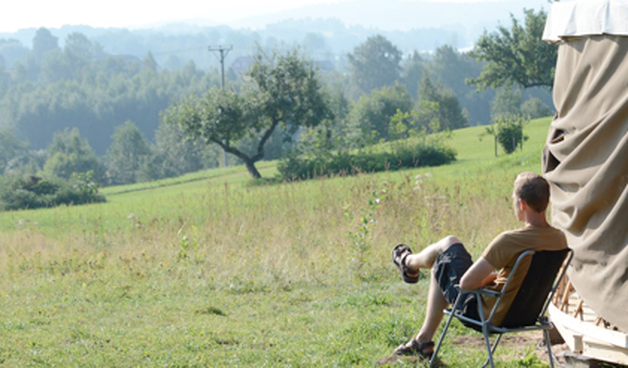
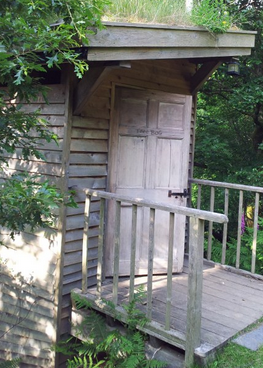
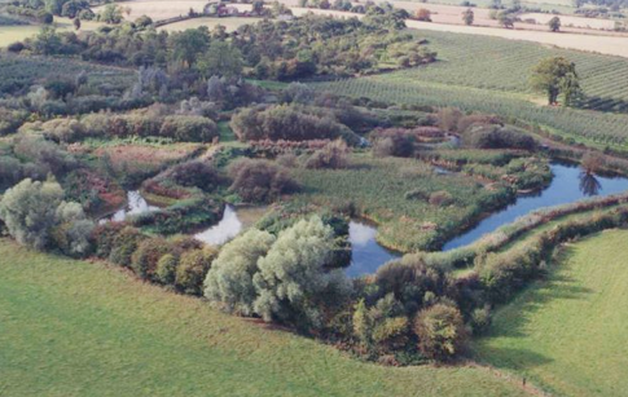
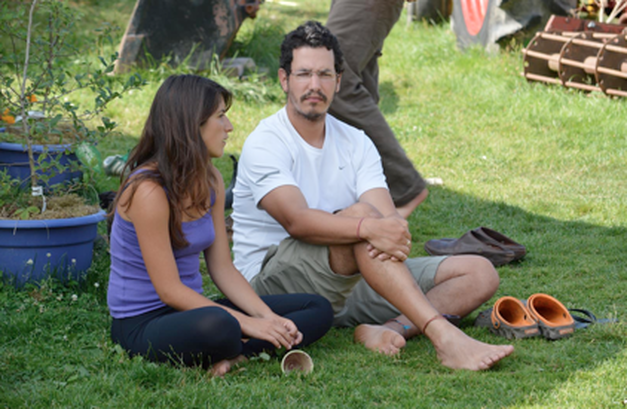
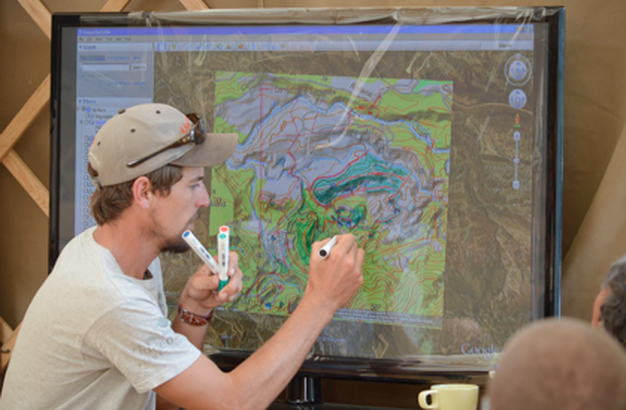


 RSS Feed
RSS Feed